Background Intro
In case you are experiencing hair loss, hair thinning, or complete hair loss, you may be in pain and confusion. Fortunately, thanks to wigs and toppers, women are not curbed by hair loss and can get away with wearing any hairstyle they want.
Related: Hair Loss In Women: What Causes It And How To Solve It
What Makes Hair Toppers The Wonderful Choice For Thinning Hair?
Does wearing a wig prevent hair growth?
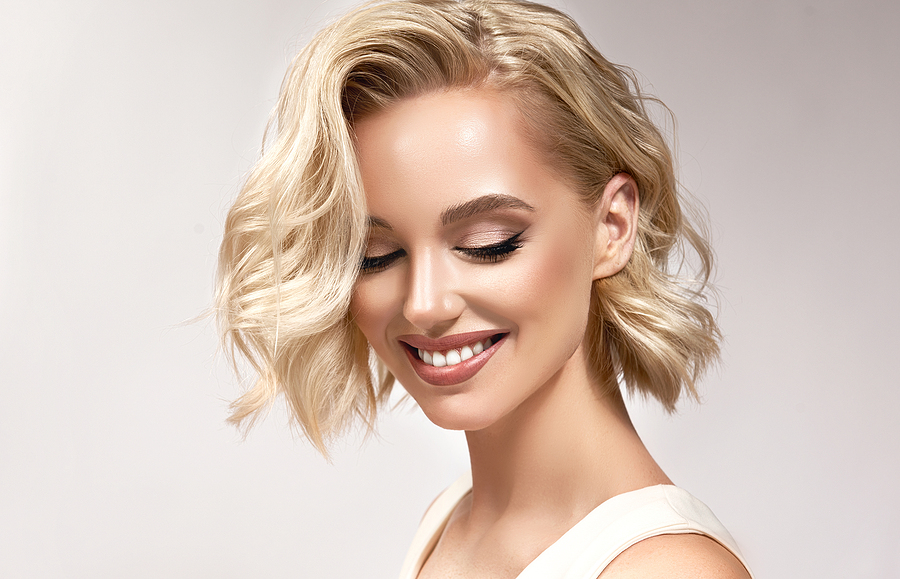
For people who wear wigs on a daily basis, especially newbies, one question has always been a concern: Will the wig hinder the growth of my hair? Here, we give an absolutely trustworthy answer: No. The reason is simple. You can think of it as an accessory, such as a hat, a sleep cap or other head coverings. It only covers your head and does not cause irritation and harm your hair, scalp or hair follicles. Just like wearing clothes, the hair on all parts of our body does not stop growing just because it is covered by clothes. You can also ask an experienced wig specialist and they will tell you the same truth. Therefore, malicious statements such as "wigs are making me bald", which have gone viral on the internet, are nonsense. Just think of them as a joke.
Instead of obsessing over such ridiculous lies, it is more important to take care of your hair so that it becomes strong and robust and does not fall out easily. Most damage is caused by improper daily handling such as shampooing too often, over-styling your real hair or using hot tools too often. An important benefit of wearing a wig is that it is an important part of the hair care routine that promotes the growth rate of the hair.
Related: How To Create The Flawless Hair Care Regimen For Your Hair Type?
What is the perfect wig type for hair loss?
Hair loss can be frustrating. Many women are emotionally drained due to thinning hair or total hair loss. However, wigs can help you regain your confidence. Nowadays, there are many types of wigs on the market to choose from, but which ones are best for hair loss sufferers? After research, we found the following ones are perfect.
#1 Lace front wigs
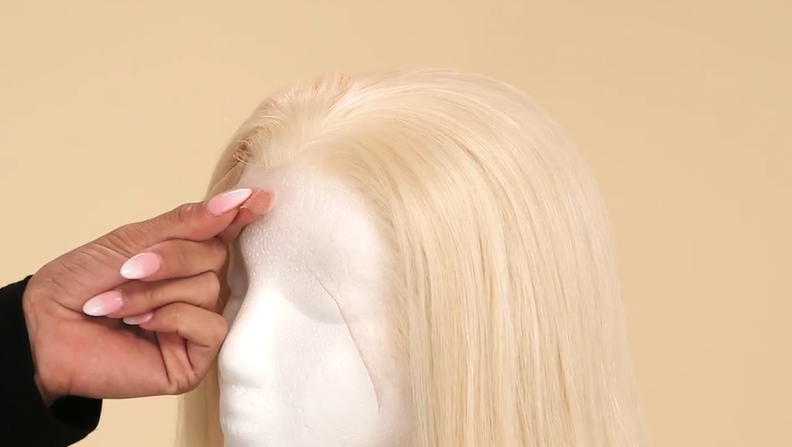
Lace front wigs are versatile and can be used for a variety of hairstyles. Look closely around the hairline of your forehead and if you notice thinning hair there, then this wig is the perfect choice for you. The extended lace edges subtly blend with your scalp to create natural hairline and enhance the authenticity of your hair's appearance. In addition, the lace front wig has widely spaced hair that closely resembles your original hair. When you need to attend an event, it provides you with a lot of security with its invisibility.
Related: How To Style Your Wig Like A Pro: Step-By-Step Tutorials
34 Superb Holiday Hairstyles To Glitter In All Festivities
#2 Monofilament wigs
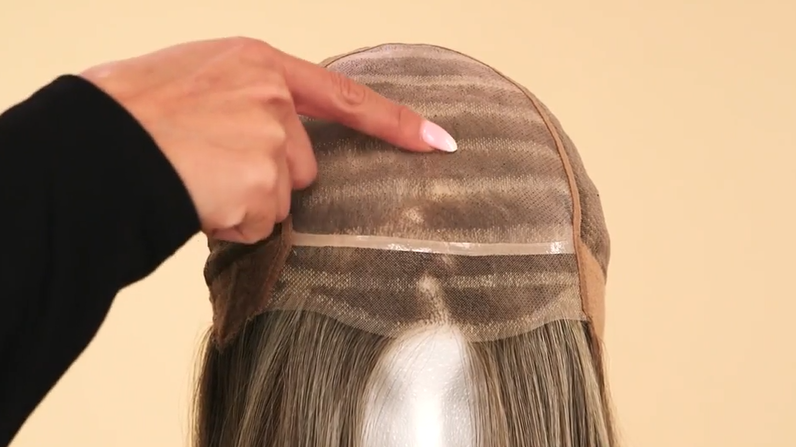
The most outstanding advantage of a monofilament wig is its ability to show a very natural parting on your head. This has become one of the reasons for its popularity. It is also very comfortable to wear. The process of this wig is complicated and requires the hair to be individually sewn onto a very thin and fine transparent material (i.e. monofilament), which makes it a great quality. Monofilament wigs can stay on your head for a long time and will not easily deform or get old. If you want your hair to have a realistic root look and keep your scalp comfortable, don't hesitate, it's the best way to go.
#3 Full human hair wigs
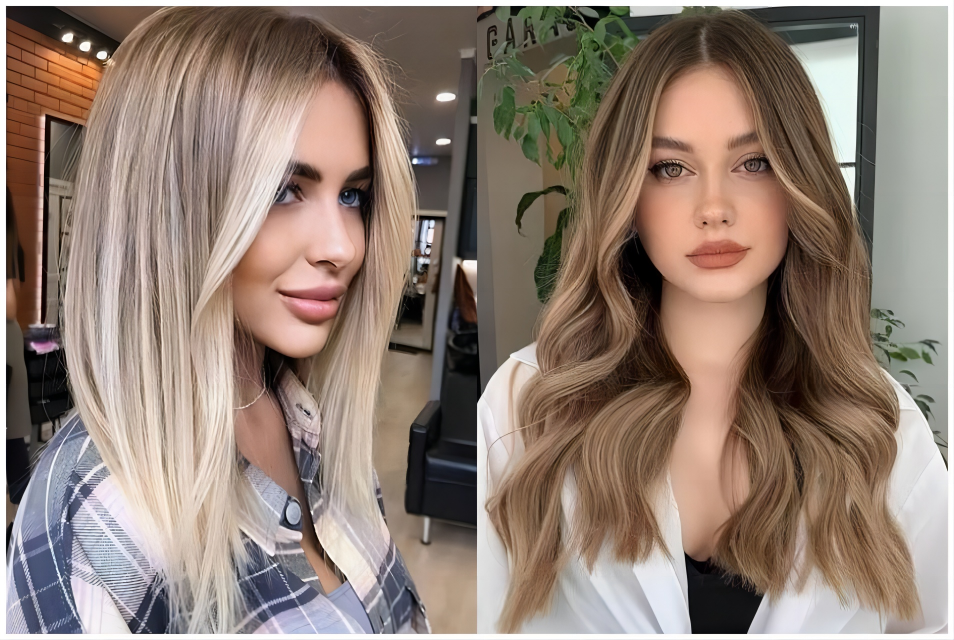
You should also have heard the legend of the full human hair wigs. It fully deserves the title of "hero". Human hair wigs are made from real human hair strands that have been carefully processed. High-quality human hair wigs for hair loss can be a great option for women with thinning hair. Full wig offers full coverage, so that no hair thinning, or balding areas are on show. You can blow or style full human hair wigs as your own hair. 100% human hair wigs are very good quality, have a natural shine and texture, and are easy to dye. Although a little expensive, it lasts much longer than synthetic hair wigs.
#4 Wigs for specific groups
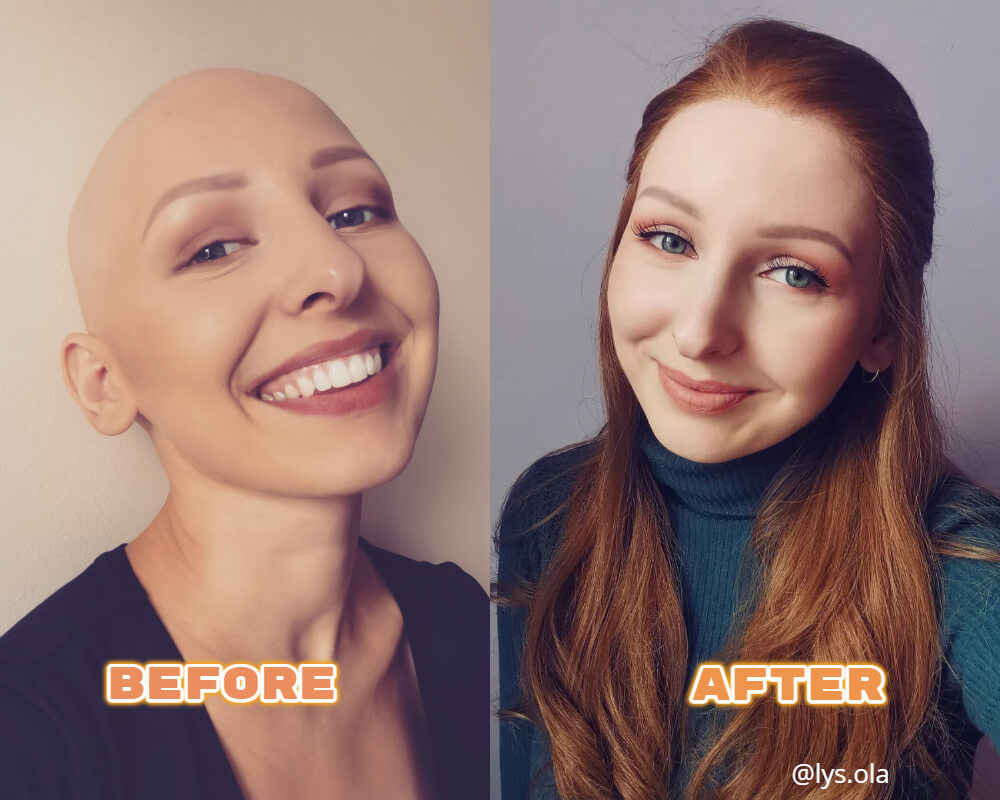
For patients who require chemotherapy, hair loss may be one of the side effects can even go bald. Some patients are very conscious of their image and therefore wish to wear a wig until their hair grows out. Wigs specifically designed for chemo can fulfill this desire. You can choose human hair or synthetic hair wigs on your own.
For patients with alopecia areata, intermittent hair loss is distressing. Wigs for alopecia areata may be able to improve your mood. Professional caps stay in place without adhesives, giving you back your gorgeous hair. Premium human hair ensures you have a natural look.
What can I do instead of wearing a wig?
Many women can experience hair thinning due to damage or stress. If your hair loss is mild or moderately significant, it may be more appropriate to wear hair toppers and other alternatives. Or if you just want to add some style, we recommend hair extensions and sleep caps.
#1 Hair topper
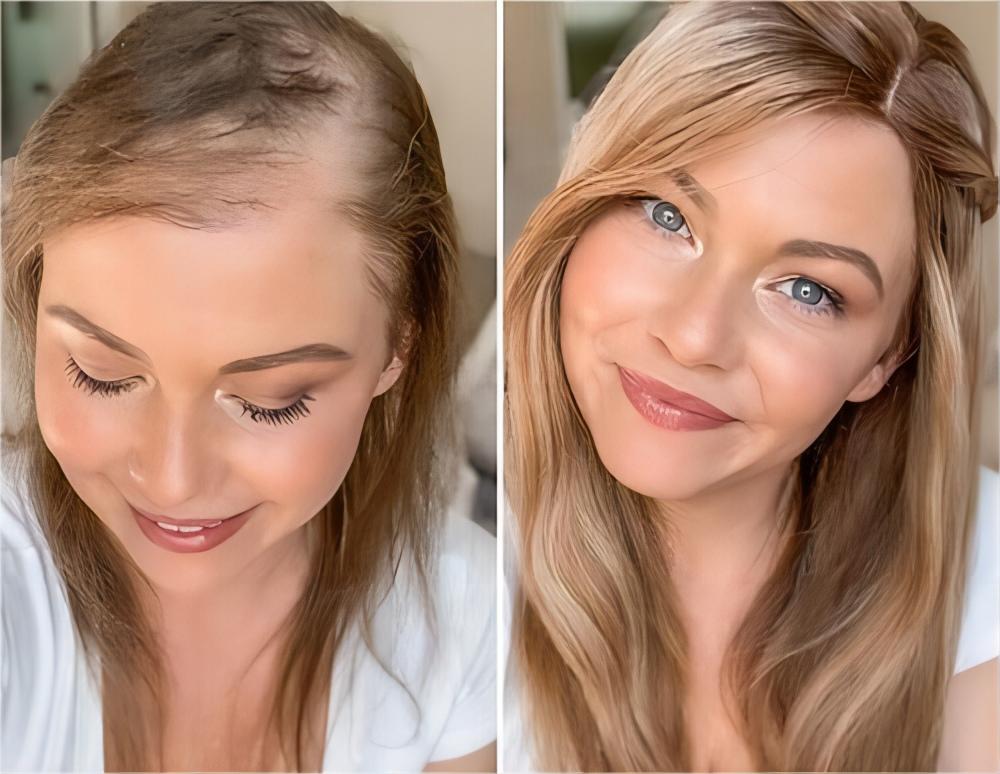
Unlike wigs, the hair topper has a specific coverage area. It is ideal for people with mild hair loss (partial hair loss) or thinning hair to add volume. Hair toppers blend with your natural hair and give you the appearance of having fuller hair. The best human hair toppers are made from natural virgin European hair and are not processed in any way. It has soft, fine and smooth hair strands. Many Caucasians love these hair toppers because they are very similar in texture to their own hair. Whether it is a mono base, silk base or lace base, it can provide you with a light wearable feel and good breathability. You can choose according to your situation. In addition, it is easy to apply color or add highlights and lowlights.
Related: The Most Comprehensive Guide For Hair Toppers 101
From Clip-Ins To Integration: A Comprehensive Guide To Different Types Of Hair Toppers
#2 Hair extension
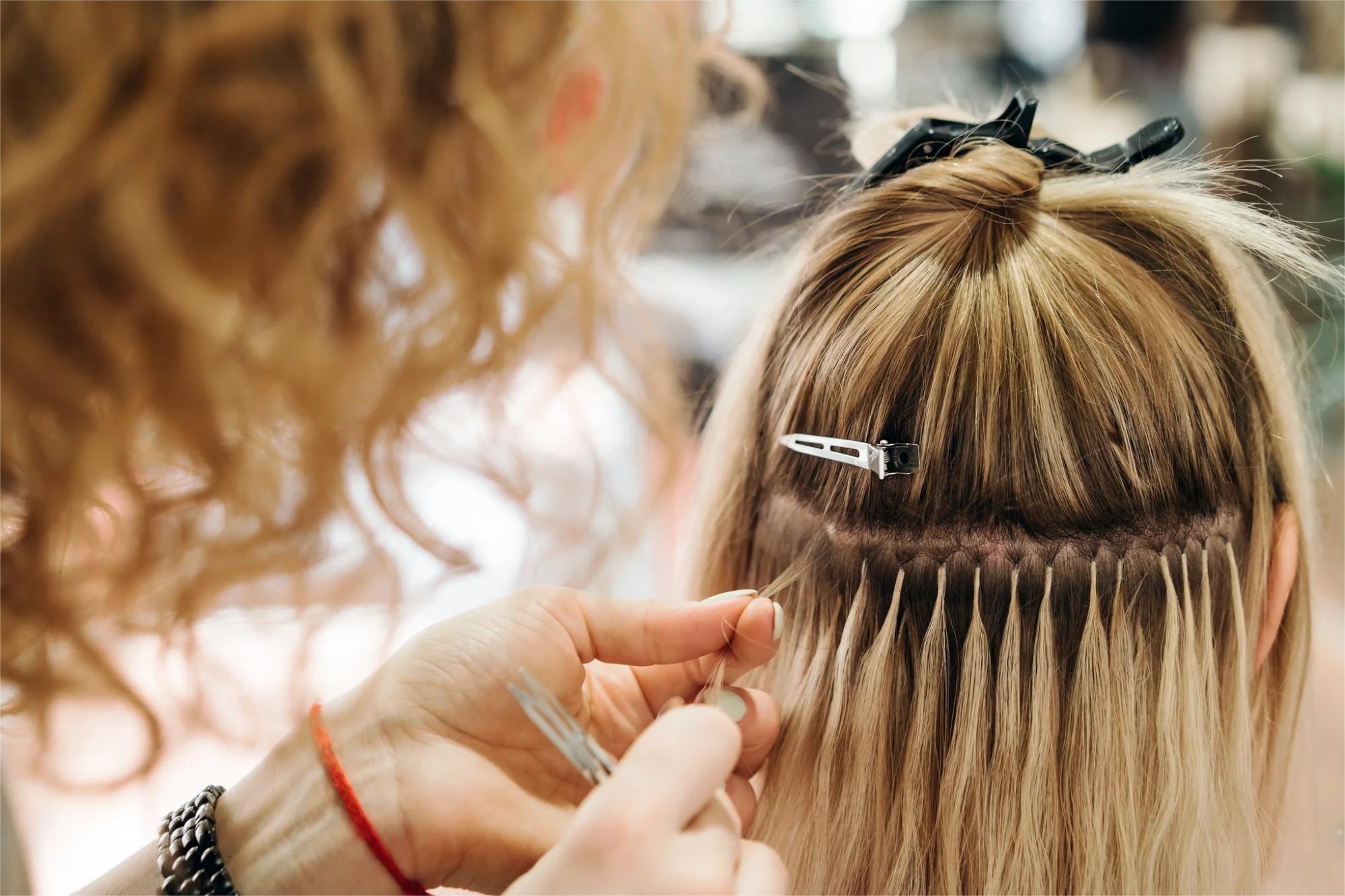
If you feel that your current hair is too short or not full enough, or if you like to change your hairstyle frequently, you may want to wear hair extensions. Like the hair topper, it adds volume and length to make your hair look more fluffy. There are four types of hair extensions: taped, clip-in, bonded and halo extensions. Compared to wigs and hair toppers, hair extensions have a shorter lifespan, usually lasting four weeks to four months.
#3 Sleep cap
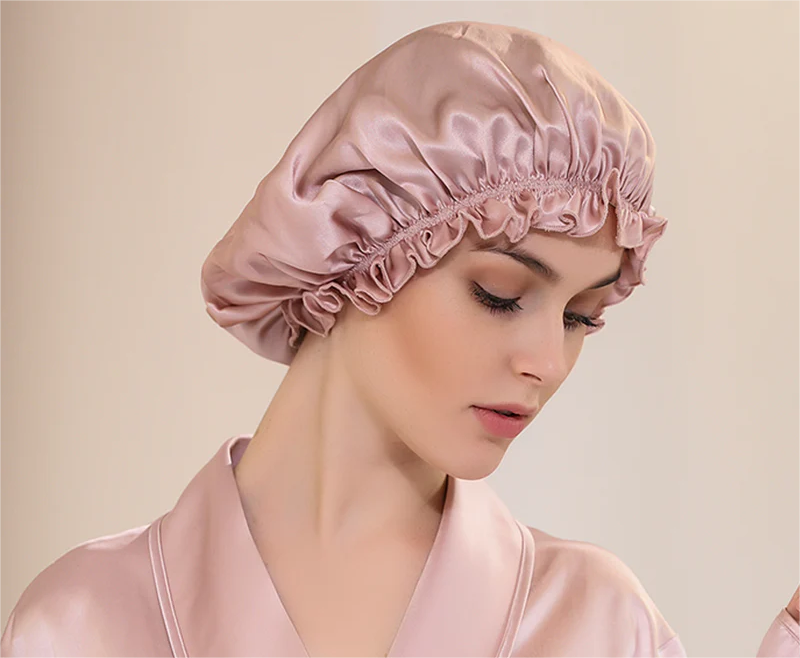
Don't be fooled by its name: the sleep cap can not only be used for sleeping, but also can be used as a fashionable accessory. Cotton sleep cap is the most common, but the friction caused to the hair is also the largest. Recently, satin and silk sleep caps are more popular because they have a very fine and smooth touch, almost no friction on the hair. Among them, 100% pure silk sleep cap is the best, does not contain any artificial ingredients. With natural silk, the caps provide exceptional comfort and lock in moisture.
Related: Why You Should Wear A Sleep Cap And How To Pick The Right One?
How to fix a wig in place?
As the saying goes, a good start is half the battle, and being well prepared is the foundation for success. Before putting on your wig, you should make your hair soft and smooth in advance to make it easier to secure the wig. Make your hair fit perfectly on your scalp to prevent the wig from unevenness on your head. If your hair is long, you can braid it and wrap them around to secure it at the nape of your neck. For wig wearers with short hair, you only need to straighten your hair back from the hairline.
Method 1: Wig Tape
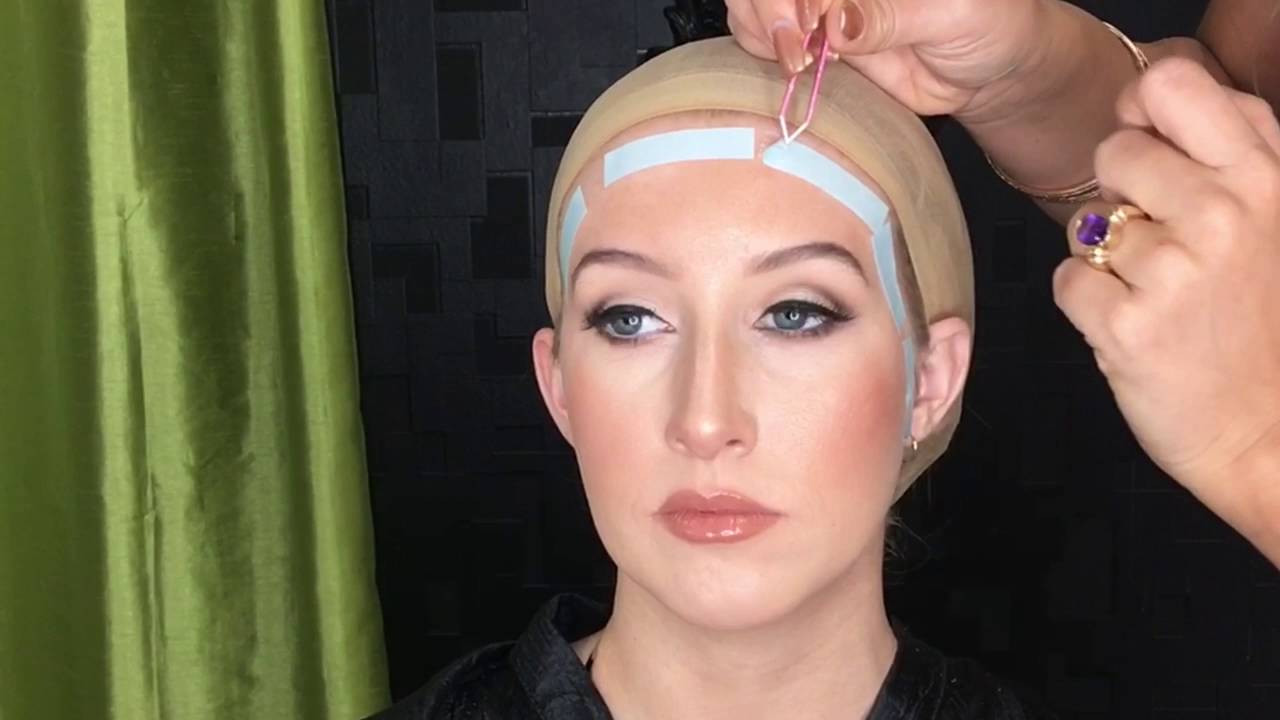
If you are bald, wig tape is a good option. In fact, it works best on the top of a bald head. Wig tape is sticky on both sides and if your biological hair sticks to the tape, it will suffer damage and become prone to breakage. This can be very uncomfortable. Of course, you can also use a glue remover to get rid of this problem.
How to do:
- Clean your scalp of dirt and grease to keep your head tidy and make sure the area where you put the paper tape is clean. This way the tape will not slide around or come off.
- Peel off one side of the tape and apply it carefully to the base of the wig so that it is smooth and not creased.
- Put on the wig to determine the position. Peel off the other side and allow the tape to fit the scalp in the correct direction for a comfortable fit.
Method 2: Wig Grip
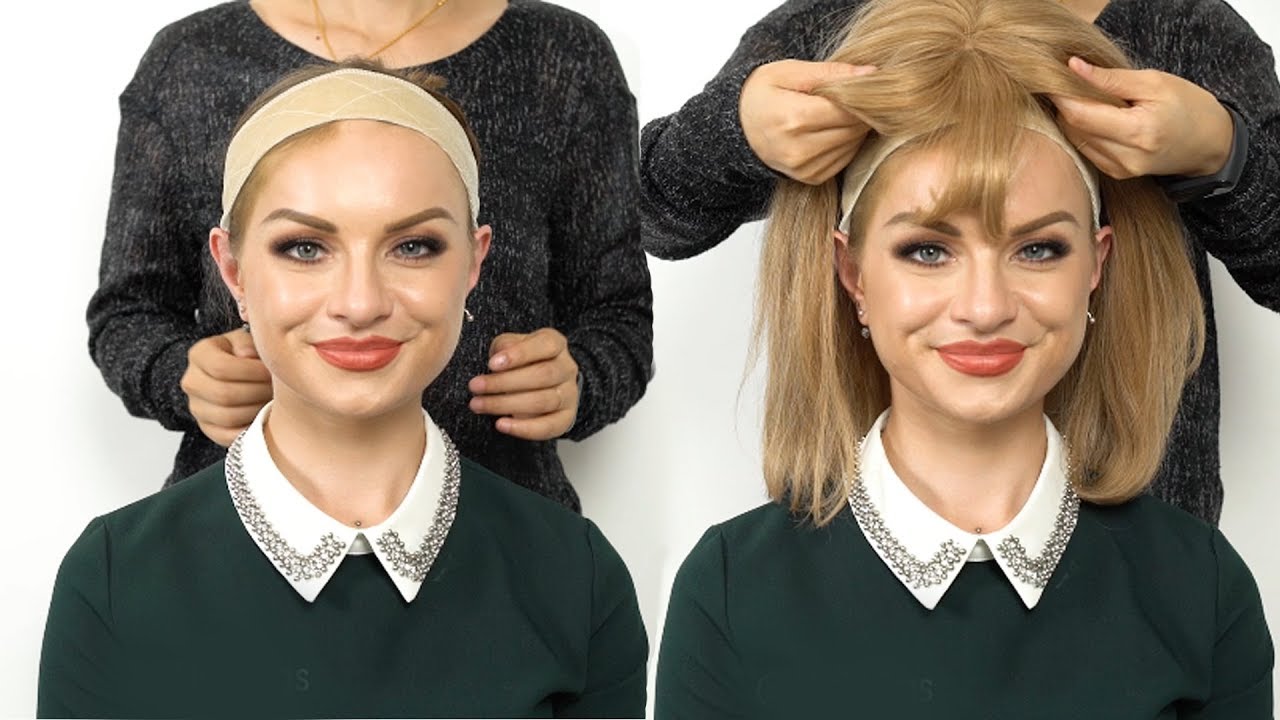
The wig grip is used similarly to a non-slip strap, it adapts to the body's movement and can be freely adjusted in position with nylon buckles so that the weight of the wig or hat can be evenly distributed over the head.This prevents a small amount of hair from being pulled or the wig from falling out, improving the wearer's comfort as well as confidence.
How to do:
- Place the wig grip on your head along your hairline, making sure the lower edge of the grip overlaps your hairline.
- At this point the nylon clasp at the back of the grip is at the nape of your neck, use the nylon clasp to adjust the size to fit your head.
- Place the wig on the grip, from front to back. Face the mirror to adjust the position of the wig according to your personal needs, and make the overall appearance look more realistic.
Method 3: Silicone Solution Sheet (SSS)
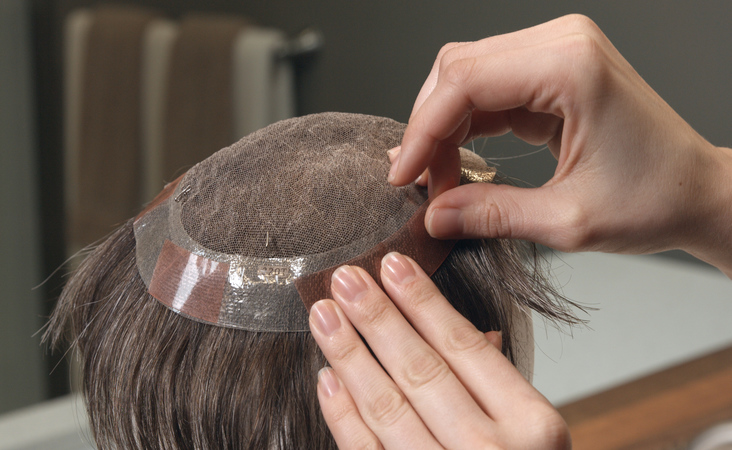
The silicone sheet consists of two sides, one smooth and one with a mild suction effect. You can cut the silicone to the desired size and shape. You can also switch between the two sides at will. When the smooth side is facing outward, you can apply wig tape to specific areas to prevent the wig from moving back or slipping. If you have lost your hair completely, let the side with suction face outward. In this way, it will gently attach to the scalp for added wig security. It is highly flexible and you can decide its position, size, shape, etc.
How to do:
- Cut the silicone sheet according to your needs to make it into the right shape and size.
- Just sew it in the wig cap.
Method 4: Wig Caps

If you are used to wearing a capless wig, the wig cap can assist you in holding it securely on your head. The wig cap can wrap around all your hair, regardless of length. Thus, it keeps your bio hair in place. Moreover, it provides a clean and secure barrier that separates your scalp from the wig, reducing friction between your natural hair and the wig and helping to avoid hair breakage. In addition, it helps to keep the wig neat and tidy and free from scalp oils. The wig cap comes in a variety of colors, and you can choose the one with the most similar color according to the color of the wig. It is also made from different raw materials, but all of them are elastic and breathable. Wig caps are generally not expensive.
How to do:
- Make sure your head is clean before wearing the wig cap. This will prevent the wig cap from getting dirty.
- Align the front edge of the wig with your hairline and adjust the position from front to back, all the way to the back of your neck.
- Gently run your hand over the wig cap to check for raised air pockets.
- Smooth out any uneven areas with your hands so that the wig cap fits your head perfectly.
- Now, you can put on your wig.
Method 5: Wig Clips

Wig clips are suitable for people with thinning hair or incomplete hair loss, not for baldness. You may think that your wig fits you well, so it should stay in place. However, adding some clips can prevent unexpected conditions, such as high winds and strenuous exercise. Note that it is only useful without a wig cap.
How to do:
- Once you've finished styling your wig, lift the top of the wig and place the clips on top.
- Put on the wig and fix the clip on your hair.
- You can decide the number and size of clips according to the style and stability of your wig.
- You can try beforehand where the wig clips will be most comfortable and strongest in order to reduce the risk of wig falling off.
Method 6: Bobby Pins

If you want to make sure the wig doesn't fall out of your head, consider using bobby pins. It's small and simple, looks natural, and won't ruin the look of your hair. The advantage of bobby pins is that they are easy to use and require no maintenance.
How to do:
- Use bobby pins to secure your natural hair.
- After putting on the wig, layer the wig and use the bobby pins to secure each part of the wig to the bio hair.
- With no weft, secure the hair to the side with bobby pins.
- Use the amount you need.
How do I keep my hair healthy under a wig?
No matter how often you wear a wig, you should take care to protect your hair under it and keep it healthy. Combining expert advice, we have sought out three main measures. Now, let's start a worry-free wig journey!
Related: How To Create The Flawless Hair Care Regimen For Your Hair Type?
Measure 1: Develop a complete hair care routine
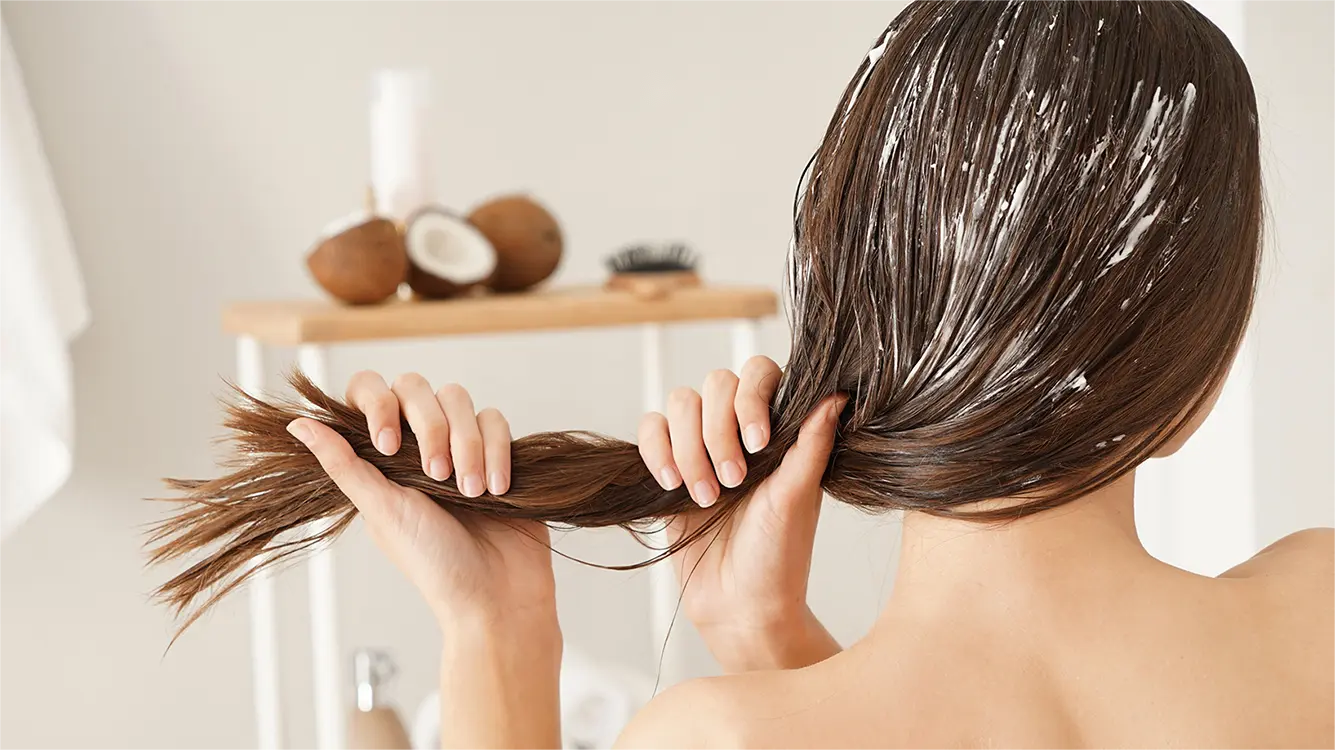
1. Learn to care for your scalp. You can use a scalp scrub to remove built-up dirt and dead skin. After cleaning, apply essential oils to lubricate the scalp. While applying, you can massage your head in the meantime. Since the wig will slightly pull on the scalp, the blood flow to the scalp will be slowed down. Therefore, you need to massage to enhance blood circulation and promote hair growth.
2. Maintain your hair moist. Perhaps you've noticed that whenever you wear a wig for a while, your natural hair becomes dry or even split ends. Try emollients and conditioning products that can help lock in moisture and ensure your hair is in a healthy condition during wear. Leave-in conditioners are also good.
3. Stick to washing your hair weekly. If you wear a wig every day, you should also wash your hair at least once a week. However, the exact frequency of washing needs to be determined by the sweating of your scalp. Oil and hair products usually build up within a few days. You need to make sure that your natural hair is clean before you wear a wig. Cleaning your scalp helps your hair to become strong and also helps to reduce dandruff.
4. Trim regularly. Whether you wear your wig once a week or every day, trimming your hair should not be neglected. It's true that using your wig as a protective style can reduce a lot of hair damage, but that doesn't mean you don't need to take care of your biohair. Regular trimming can effectively remove dry or split ends and prevent them from continuing up the hair shaft and causing further damage. Typically, it is appropriate to cut your hair 6 to 8 times a week.
Measure 2: Try to avoid pulling on your hair strands

1. Keeps the hairstyle loose under the wig. Braiding up your natural hair is a necessary step before wearing a wig. This helps to hold your own hair in place, making the wig smooth and natural looking on your head. However, you should not tie your hair too tightly as this will pull your scalp, weaken your natural hair fibers, damage hair follicles or cause hair breakage. You can try a loose style.
2. Wear a wig cap or wig grip. They will protect your hairline. As mentioned earlier, a wig cap allows your own hair to be held well in place, staying in its original position without moving randomly, and keeps your own hair and wig separate, greatly reducing friction and making your hair less damaged. A wig grip is freely adjustable in size to fit the curve of your head. They are both very effective ways to protect your hair underneath a wig, and both are very affordable.
3. Choose the proper wig size. A wig that doesn't fit will only add to your troubles.You will feel very uncomfortable. You will feel very uncomfortable. A wig that is too big will tend to slip off and a wig that is too small will tend to pull your hair and cause your hairline to move back. Therefore, you need to carefully measure the size of your head and the wig base and choose the most suitable size, or you can also customize one.
4. Apply oil to your hairline to reduce friction. The edge of your wig near your forehead may cause slight friction on your hairline. You can use shea butter to massage the skin around your hairline and fragile baby hairs, which will help reduce the friction between your wig and hairline.
Measure 3: Modify the bad habits of wearing wigs
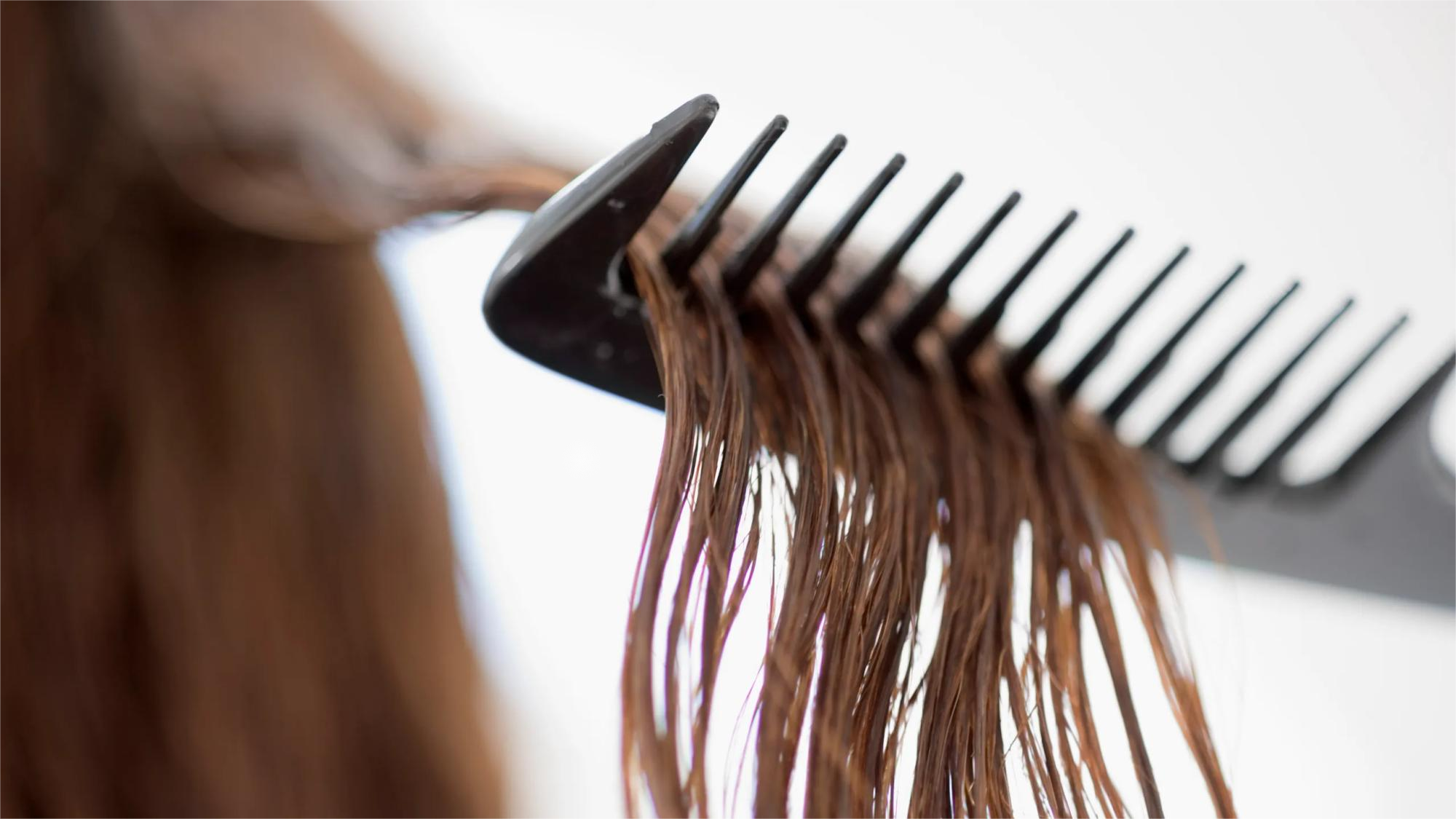
1. It is prohibited to wear a wig on wet hair. Putting on a wig while your hair is wet does not make you feel comfortable. More importantly, it will promote the growth of bacteria. A wig covering the scalp will raise the temperature, which, combined with moisture and body heat, can easily lead to mold growth. When the more moisture in your hair, the longer the wet state lasts, the weaker the hair strands will become and become prone to breakage.
2. When your hair is dirty, don't wear a wig. The reason is obvious - it's unhygienic to do that. This can infect your scalp with bacteria and can cause your hair to stink. Imagine what it's like to have your greasy, dirty, sweaty hair wrapped in a wig. You'll feel the dirt sticking to your head, and your hair will become even less healthy. In addition, your wig will also become dirty.
3. Reduce your need to sleep with your wig on. In the previous post we mentioned that it is best not to sleep with the top of your hair on, and the same goes for wigs. Because this can squeeze the hair and cause hair damage. At the end of the day, let your hair relax and keep your hair breathing regularly. Take off your wig, comb it out and put it on a wig stand. This will go a long way in promoting healthy hair. Even without a wig your bio hair will still be rubbed by the pillow, so we recommend wearing a soft silk sleeping cap to help protect your hair and maintain your hairstyle.
Final Thoughts
Ultimately, the perfect wig type for you will depend on your personal preferences and needs. Fixing a wig in place and maintaining healthy hair under a wig are essential for achieving a comfortable and natural look. By following these tips, you can ensure that your wig stays in place and your hair remains healthy and nourished. We hope this article has been helpful in providing you with the information you need to wear your wig with confidence.
Images credit: Google, Pinterest, YouTube.
